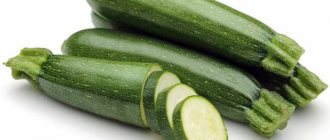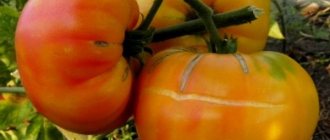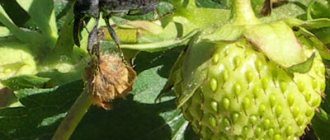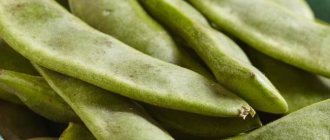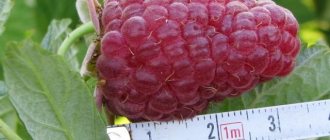Family onion is one of the varieties of the well-known onion. It has many names: gardeners call it “family” or simply “family”, but in the book it is correct to say “multi-bud onion”. Undoubtedly, the main value of heirloom onions is their juiciness, unobtrusive aroma and pleasant mild taste. But many are afraid to grow this plant in the garden, since onions produce small, numerous bulbs. But if you study the features of agricultural technology and the nuances of growing individual varieties, you will be able to collect juicy bulbs weighing at least 150 g.
Characteristic
- Bulbs of regular oblong shape
- Onions grow in nests
- There are 25-30 bulbs in one nest
- Feathers are not sharp, with thin walls
- Can be stored for a long time: 7-8 months
- Very delicate, mild taste
- Most varieties are early ripening
- High yield
- The color of the bulbs is very diverse: purple, burgundy, golden, white, red, bronze.
The best varieties
- Knyazhich. The weight of one nest reaches 75-80 g, and up to ten bulbs grow in it. The scales of this variety are either light or brown with a red tint. And when cut, the onion is a delicate pink color. The taste is not bitter, soft.
- Veliky Ustyug. It is considered a family onion variety with large bulbs - each weighing up to 80 g. They are round, slightly elongated, with a red-brown color. Good dense heads that can be stored for a very long time. The variety is valuable and popular among our gardeners due to its excellent yield.
- White Queen. Beautiful large bulbs with snow-white husks. One onion can weigh 150-170 g. The taste of this variety is semi-sharp, slightly piquant, without bitterness at all. Good yield, classified as a mid-season variety.
- Old Believer. This variety was bred in the Volgograd region. It is often used by Old Believers as an effective remedy in folk medicine, which is why the variety got its name. Its taste is quite sharp, and the bulbs have a beautiful copper color with a pink tint.
- Kuban yellow. Refers to early ripening varieties. The bulbs are very small - they weigh no more than 25 g. The scales are of two colors: yellow on the outside, white on the inside. The variety is characterized by increased resistance to various diseases and can be stored for a long time.
- Emerald. This shallot is distinguished by dense small onions - no more than 20 g in weight. The onion is very juicy, has a delicate aroma and mild taste. Belongs to the semi-sharp varieties. Among the main advantages are that they ripen quickly and almost completely, can be stored for a long time, and produce a stable harvest.
- Snowball. Early ripening of the variety. The bulbs are egg-shaped, quite small, weigh 30 g. The taste is sharp, but the bulbs are very juicy. Because of the white scales, this variety got its original name. Can be stored for 7-8 months.
- Sprint. It has a short growing season. This early ripening variety can be harvested 45 days after planting. The bulbs are small, 9-10 grow in one nest. It is a universal variety, as it is suitable for both growing in open ground and in greenhouse conditions.
- Water lily. For lovers of sweet varieties of heirloom onions. The shape of the bulbs really resembles water lilies, which is why the variety got such a wonderful name. The pulp of the bulbs is not bitter, juicy. There are 5 bulbs growing in the nest, each weighing no more than 70 g.
- Prometheus. The variety is quite large - after all, the bulbs weigh 80 g. The nests are also massive, containing at least 10 pieces. The taste is mild, without bitterness. Very high yield.
- Grant. It is valuable not only for its bulbs, but also for its excellent greens, which are often used in salads and appetizers. The bulbs are small, ranging from 20-25 g. They have a rounded flat shape. Color – classic light brown with gray tint.
- Andreyka. This variety is not grown on a large scale; it can be found among private gardeners. Mid-season variety, small bulbs 25 g each. Average yield, but well stored for a long time.
- Cascade. Used to grow a biennial crop from sets. A nest with 5-7 bulbs, each of which weighs 30 g. Their shape is wide, slightly flat. The color of the outer husk is pink. High yield, long-lasting variety.
- Earring. This heirloom shallot, unlike most varieties, has a very pungent flavor. Stores well - at least 8 months. The color is yellow, the bulb is dense and weighs 25 g.
- Kunak. The bulbs are medium in size, 4-5 pieces are collected in a nest. Their shape is round or flat. Color – yellow. Taste without bitterness.
- Sturdy. Bulbs with pink scales do not fit together: the weight of the bulbs even in one nest can vary greatly from 25 to 55 g. They grow in 4-5 pieces. Very high yield.
Ripening period
All varieties of the Family variety are characterized by early ripening compared to ordinary onions. Depending on the plant chosen for planting and climatic conditions, harvesting begins within 60-120 days. The feathers for greens are cut 1-2 weeks after planting the sets and a month after sowing using the seed method.
Productivity
By strictly observing the regionality recommended for a particular variety and having studied the agricultural technology of its cultivation, you can collect up to 1.5 kg of Family bulbs from each square meter of crops.
Attention. The yield declared by the seed manufacturer is reduced due to plant damage by insects or various diseases. Therefore, at all stages of the growing season it is important to take preventive measures.
Disease resistance
All varieties of shallots are characterized by increased resistance to rot and fungal diseases.
Characteristics of the bulb, description of appearance, taste
Depending on the specific variety, Semeiki have a sweet, medium-hot, spicy and even bitter taste. The size and shape of the bulb, the color of the husk and the juicy part also depend on its varietal.
General features characteristic of the Family Bow:
- the size of the bulbs is relatively small - from 4 to 7 cm;
- elongated or slightly flattened shape;
- the color range of the husk varies from yellow-brown to red and even pink-violet;
- the edible part of the bulbs is dense, juicy and aromatic;
- weight - from 20 to 80 g, depending on the variety and agrotechnical growing conditions;
- high degree of frost resistance and excellent shelf life.
For which regions is it recommended?
Choose planting material for cultivating shallots taking into account climatic conditions. There are more than fifty varieties of Semeika, suitable for cultivation in the south of Russia and in central Russia.
Attention. When planting in midland regions, choose early-ripening shallot varieties. This will ensure the crop reaches full technical maturity before the first frost.
Landing dates
All varieties of heirloom onions, without exception, belong to the group of cold-resistant plants. They are not afraid of spring frosts, so gardeners plant onions in open ground from mid-March to early April. The first greens will be ready for cutting in mid-May.
Important advice! If you want to get an early harvest, then shallots need to be planted in the fall. Planting can be done throughout October, but not later. Before the first serious frost, the bulbs will have time to take root well, but a sharp cold snap will slow down their growth. The bulbs will overwinter well in the ground, and with the arrival of spring they will immediately begin to actively grow. You won’t have to guess when it’s best to plant - the onion itself will determine the optimal temperature regime for itself. And in this case, you will be able to cut greens in April.
In the northern regions of our country, autumn planting is still not recommended. High risk of bulbs freezing. Please note that novice summer residents plant late - at the end of April. And this is wrong. Heat provokes increased growth of greenery, but the bulbs do not have time to take root. As a result, you will reap a poor harvest - the bulbs will be very small and loose. Such onions cannot be stored for long.
General recommendations:
- All varieties of heirloom onions can be planted from the second ten days of March.
- Planting for winter is only suitable for the central and southern regions.
- Late spring planting will produce a poor onion harvest.
Features of growing family onions in different regions
Unlike onions, all shallot varieties included in the State Register of Breeding Achievements do not have a regional approval. Therefore, the peculiarities of growing heirloom onions in different regions should include, first of all, the timing of planting. If for central Russia spring planting is recommended in late April - early May, then for the West Siberian, East Siberian and Far Eastern regions these dates can be shifted to the second half of May, and for the southern regions planting in March - early April will be optimal.
In addition, when choosing a variety, it is important to take into account the ripening time. For example, late and mid-late varieties of heirloom onions may not have time to ripen properly in the northern regions.
Soil preparation
All varieties of heirloom onions are demanding on the quality of the substrate. They love to grow in fertile soil. Since the bulbs are small, they need turfy, loose soil. This crop requires neutral soil and grows very poorly in acidic soils. As a rule, the onion begins to rot. Before planting heirloom onions, you can prepare the soil in the fall. Add humus to the ground at the rate of 5 kg per 1 sq.m. It would not be superfluous to add potassium salt (10 g per 1 sq.m.) and superphosphates (25 g per 1 sq.m.). An important point is to thoroughly loosen the soil immediately before planting.
Crop rotation rules:
- Family onions can be planted in beds after legumes, potatoes, beets, and carrots.
- It is not advisable to plant onions in places where pumpkins grew (zucchini, cucumbers, melons, squash, pumpkins).
- After the family onions, plant strawberries, all types of cabbage, radishes, mustard, salad vegetables (spinach, arugula), cucumbers, peppers, tomatoes.
Preparing the bulbs
This is an important nuance that affects the quality of the harvest in the future. This is where the landing begins. The heirloom onions need to be sorted out and the excess dry husks removed from the bulbs. Check if they are all tight and there are no signs of rotting. Prepare a solution of copper sulfate: 20 ml per 1 bucket of water. Dip the onion into the solution and let it sit for 15-20 minutes. Then rinse in a container with clean water.
Important advice! If your site has fairly dry soil, then 10 hours before planting, the bulbs can be soaked in a weak solution with fertilizers. You need to keep the onions in the bucket for at least 8 hours. The bulbs will replenish the moisture lost during storage. And even in dry soil they will quickly begin to take root and grow.
Growing and care
The process of growing heirloom onions is in many ways similar to cultivating regular onions. However, there are also some small features.
Soil preparation
Heirloom onions prefer fertile soils , which may be heavier than for regular onions. The soil must have a good drainage system. The acidity of the soil should be neutral. The best predecessors include potatoes, legumes, and carrots.
In the fall, it is recommended to add humus in the amount of five kilograms, as well as 25 grams of superphosphate and 15 grams of potassium salt per square meter.
Before planting, fertilizing with ammonium nitrate at the rate of 7 grams per square meter will play a positive role.
Landing dates
It is worth noting that onions are a cold-resistant plant . At a sufficiently low temperature, its root system can develop intensively, but this will not be noticeable in the growth of leaves.
The root system can grow at temperatures from +2 to +25 degrees. At the same time, it will easily tolerate frosts down to -6 degrees. The green part of the plant shows best growth at temperatures from +15 to +25 degrees, which does not prevent it from successfully withstanding frosts down to -7 and heat up to +35 degrees.
These data should be carefully considered when choosing the optimal planting time.
If you waste time and plant the bulbs when the soil and air have sufficiently warmed up, the active growth of greenery will immediately begin, to which all the plant’s forces will be directed. The root system will remain underdeveloped, which will negatively affect the future harvest.
Family onions can be planted not only in spring, but also before winter . In this case, you can expect an earlier harvest, and the greens are formed 10–12 days earlier.
Planting scheme
The optimal distance is 20 centimeters between rows and 10 centimeters between bulbs. With this scheme, the consumption will be 1–1.5 kg of planting material per square meter of bed. In this case, it is better to use medium-sized bulbs for planting. Small bulbs will not give a good harvest, so it makes sense to plant them only on greens.
It is impossible to underestimate the distance between the planted bulbs, as this will result in a rather small harvest.
Preparation of planting material
To get a harvest of large bulbs, planting material must be properly prepared. The preparation process can be divided into several stages:
- Cleaning planting bulbs from dry scales.
- Etching in a solution of copper sulfate. To prepare the solution, use 1 tablespoon of vitriol per 10 liters of water. After the procedure, the onions must be rinsed with clean water.
- Soaking in a solution of complex fertilizer. This process allows the bulbs to return moisture lost during storage, as well as replenish nutrients. The soaking time is ten hours.
- Germination. The prepared bulbs are placed in a container and covered with a lid. The container must be placed in an unheated room until roots form five millimeters long.
- Cutting the onions in half. Some people do not perform this procedure, but it is very effective for obtaining large bulbs in the harvest. Fewer primordia remain in each half, but they will eventually form larger bulbs, since they will not be constrained by neighboring ones.
Planting heirloom onions
If planting is planned in the spring, you should wait until the soil warms up to +5 degrees . The entire planting process can be divided into several stages:
- Loosening the top layer of soil.
- Formation of furrows for planting.
- Watering the furrows.
- Fertilizer application. As a rule, you can limit yourself to adding wood ash.
- Hilling up plantings.
Plant care
Until the emergence of shoots ten centimeters long, you don’t have to do anything. Watering and other care are also not needed. With this approach, the roots will begin to move deeper into the earth in search of moisture, which will have a beneficial effect on the plant’s nutrition in the future.
Next, it is recommended to mulch the soil . The easiest way to use mown weeds is to use them as mulch. There is no need to dry them. A layer of about ten centimeters should be maintained. When the mulch dries, the bed will be covered with a porous, dense layer. This will not only enrich the soil with nutrients, but also protect the bed from weeds. Mulch will retain the moisture necessary to nourish the onions, and will also provide good air access and prevent the soil from overheating in the sun.
It is recommended to water onions once a week at the rate of 20 liters per square meter.
As a rule, onions do not require additional feeding when growing. But if the leaves become small or begin to turn yellow and wither, you can add a solution of 10 grams of ammonium nitrate and 15 grams of potassium salt per 10 liters of water. Potassium salt can be replaced with wood ash. Manure aged for three years can be recommended as an organic fertilizer . Manure is diluted with water in a ratio of 1 to 10, and bird droppings - 1 to 15. If onions are grown on poor soils, then such fertilizing can be done twice. The first time fertilizer is applied during the period of intensive development of greenery, and the second time - at the beginning of the formation of bulbs.
If plants are damaged by diseases or pests, spray with a 1% solution of Bordeaux mixture. It is important to remember that in this case the greens should not be eaten. Treatment should be stopped ten days before harvesting.
Harvest
You can start harvesting when half of the feathers have withered. Most often this happens at the end of July. You should not delay harvesting, as the bulbs will absorb excess moisture from the soil, which can activate the growth process, disrupting the dormant period necessary for storage. Shortly before harvesting, stop watering .
Ripe onions are dug up whole after the dew has dried. A sunny day is perfect for collecting. During the day, the bulbs should lie in the garden bed under the sun, this will allow them to dry well. In the evening, the onions should be put in a dark, cool place with low humidity, laid out in one layer. From this moment the drying process begins, which lasts up to 15 days.
You can determine the readiness of the onion by looking at the neck of the onion; it should be quite dry. When the onion is well dried, you can trim the feathers. For storage, you should select good bulbs without damage.
Heirloom onions can be stored in boxes placed in moderately warm rooms with low humidity.
Planting scheme
Growing heirloom onions requires a clear planting pattern. This vegetable crop must be grown in rows. Since the nests with bulbs are compact, the distance between the rows should be 20 cm. But the distance between the holes in the same row is 10 cm. Using a hoe, form furrows of the length you need, fill them with plenty of water. Let the water go away a little, and then start laying the onions at a shallow depth - lay them only 3 cm. If you plant them very deep, the onions will not give intensive growth of feathers, you will have very little greenery. If you plant very superficially, the plants will have weak roots. This means there will be a shortage of nutrients.
Wood ash can be sprinkled into each furrow on top of the bulbs. Water the holes again and cover with soil. There is no need to compact the soil; the soil on top must be mulched. Without this, the landing will not be correct. Shallots are very demanding of loose substrate.
How to mulch onions:
- Wood sawdust
- Senom
- Paper or cardboard crumbs
- Dry leaves
Characteristics and benefits of the vegetable
Family onions have long been grown mainly in villages and villages. Its names vary from simple “Kvochka”, “Semeyka”, “Nest” to the original “Shalot”, “Sorokozubka”, “Kushchevka”.
Family onions are one of the subspecies of onions.
But it has its own distinctive features and advantages. In one mother head planted in the ground, a different number of bulbs are formed. Some varieties are capable of dividing only up to 10 heads, then each bulb turns out to be quite large. In others, up to 20 “tenants” are placed in the nest, but in this case the heads will be correspondingly smaller, on average from 15 to 65 grams.
Each head differs not only in volume, but also in appearance. They can be:
- Oblong
- Elongated
- Rounded
- Jug shaped
- Ovoid
- Cuboid
The color of the upper husk varies from golden to bronze, from reddish to violet. When cut, the bulb may have a white structure or a pinkish tint. The green shoots of splinters have a great advantage over all other varieties - they branch well and remain fresh, green and soft throughout the entire growth period. Each feather is individually coated with wax. In addition, the feathers are much more delicate and superior in taste to other types. The taste of greens does not leave a pungent aftertaste or specific aroma after consumption from the mouth.
The greenery of the family onion is quite lush, stretching 30-45 cm. It can be cut off completely or pulled out together with the head from the nest. The plant will not suffer from this; on the contrary, the remaining tubers will receive more nutrients for development. Harvesting greens can be done after 14-21 days from planting. If you plant a plant to obtain full-fledged tubers for food, then their ripening period is much shorter than that of a regular bulb. So the latter matures in at least 90 days from the moment of planting, while the family variety can mature within 40-80 days.
Watering
Until shoots 8-10 cm high appear above the soil, family onions do not need care at all. Even when watering. It is very important not to water the plant during the first period of growth. This will stimulate the roots to grow deeper. In search of moisture, the onion will take root well and gain a foothold in the ground. Long roots will allow it in the future to receive more nutrients from the deeper layers of the substrate.
When the onion has reached its 10-centimeter height, on the contrary, you need to start intensive watering and under no circumstances allow the soil in the beds to dry out. If plants experience drought, their growing season will be shortened sharply. The bulbs will be underdeveloped.
1 month before the planned harvest, you need to update the mulch layer, water it abundantly and stop watering completely. The moisture that the mulch retains will be enough for the onions.
Planting care
After greenery appears on the surface, it is better to mulch the beds with heirloom onions. This will retain moisture and heat, which is necessary to obtain a good harvest. It is ideal to use freshly cut grass or hay for this.
Advice. It is better to start watering when the feathers reach a height of 10 cm. During this period of time, starting from planting, the roots of the vegetable will strive down “trying” to find water and, accordingly, the bulbs will take root well. Around the beginning of July, watering is stopped.
If the planting is affected by diseases or pests, it is recommended to spray the bed with Bordeaux mixture. However, it should be remembered that in this case the greens should never be eaten.
At the end of June, the bulbs become loose and thinning can be carried out. You need to leave 3-5 pieces in each nest.
Top dressing
This crop tolerates fertilizing well. Several types of fertilizers can be used. An organic and safe option that gives great results is bird droppings. Dilute it in proportions of 1:15 with water. Another good option is mullein. It is diluted in water in a ratio of 1:10.
You can also use mineral fertilizers. These can be either universal complex fertilizers or specific substances (superphosphates, potassium). All mineral fertilizers must be prepared according to the instructions specified by the manufacturer on the packaging. The universal formula for mineral fertilizers is the following proportion: 40 g of product per bucket of water (10 l).
Tips to note:
- During the period of intensive growth, onions are watered once every 3 days.
- If the weather is cloudy, but without rain, then watering is done once every 7 days.
- Want to know how to grow big heirloom onions? You need to loosen the soil 1-2 times a week
- Planned thinning of onions in the first ten days of July will help you get an excellent harvest.
- The ideal type of mulch in the summer season is freshly cut grass.
- If the onion is affected by pests, you need to spray it with a raster based on Bordeaux mixture
- After treatment with Bordeaux mixture, greens are not eaten for 5 days.
- Treatment should not be carried out 14 days before harvesting the bulbs.
- Fertilizers must be applied no later than 30 days before harvest. Then the onion will begin to gain the volume of the bulbs and stop the intensive growth of greenery.
Advantages and disadvantages of heirloom bow
The advantages of this type of bow can be considered in 2 directions:
- for business;
- for good health.
Shallots are grown for both their feathers and their bulbs.
At the same time, the green crop is harvested several times a season. You can plant onions in spring and autumn several times, providing yourself with products and a constant income for 7–9 months. All this makes this type of onion very profitable for growing. Important! Despite the fact that shallots have a positive effect on the lens and eye muscles, they are still not able to restore vision. Therefore, medications must be used for treatment.
As a product, kushchevka is consumed raw, in the preparation of various dishes and canning. Both leaves and bulbs are rich in vitamins and other biologically active substances, which provide it with a lot of advantages and beneficial properties.
- Advantages and beneficial properties of heirloom onions:
- Thanks to the large amount of sodium and potassium, the plant helps normalize blood pressure and improve the tone of blood vessels.
- Onion juice stimulates digestion, improves appetite, provoking a more active secretion of gastric juice.
- It is recommended to add vegetables to heavy dishes - fried and fatty - to improve their digestibility.
- The use of this plant helps improve vision - shallots are useful to include in the diet of those who have problems with the eyes.
- Thanks to its high antioxidant properties, the bush actively removes toxins from the body, maintaining the normal state of cells.
- The vegetable stimulates productive brain function, improves memory, and increases tone.
- Damage to shallots:
- A large amount of onion consumed at one time can impede the supply of oxygen to cells, causing oxygen starvation.
- People with pancreatic diseases and constipation may feel worse.
- May aggravate the condition of those who have diseases of the gastrointestinal tract and genitourinary system.
Problems in care
Family onions are considered a very unpretentious crop. It is very resistant to pests and tolerates temperature changes well. There is no active growth of weeds in his beds. But sometimes these plants also need help. What problems do gardeners most often see with growing different varieties of heirloom onions?
The onion feather turns yellow
Why is this happening? If family onions turn yellow, this is a sign of a lack of nutrients in the soil.
Solution. Feed. You can add a solution of potassium salt (10 g per 10 l of water), ammonium nitrate (10 g per 10 l of water) to the substrate. If you do not want to resort to mineral fertilizers, replace them with wood ash, litter or manure.
Diseases and pests, their signs and control
Detecting damage to a bow is fairly easy. If the feather unusually begins to turn yellow, you need to look inside for the reason. The problem can be a worm feeding on the internal sap of the plant. It eats up the base of the feather and spoils the internal structure of the bulb. As a result, the root system begins to deteriorate and dry out. The feather begins to wither and die, and the bulb becomes soft and lethargic, with an unpleasant fetid aroma.
Another dangerous pest for onions is the onion fly.
She lays eggs inside the head. Larvae develop in them and feed on the internal structure. The result is the death of the entire plant. To repel the onion fly, cut branches from yarrow or wormwood should be scattered around the area. They emit an odor unpleasant to the parasite.
In addition, aphids are an unpleasant pest. It attacks the plant in a large colony. To exterminate it, it is recommended to try treating the feathers with a solution of hot pepper, meadow wormwood or yarrow. If the desired result is not observed, you should use a chemical insecticide to combat parasites (Verticillin). To eliminate any pests, until the first feathers appear, you should spray a saline solution - dilute 1 glass of table salt per 1 bucket (10 liters).
If the plant has been affected by fungal diseases, it should be sprayed with a 1% solution of Bordeaux mixture. But in this case, eating a pen is not recommended. If harvesting is planned, pollination should be stopped 10 days before harvesting.
Harvesting and storage
If most of the feathers in the garden have withered, this is a sure sign that it is time to harvest. According to the calendar, harvesting of family onions falls at the end of July. There may be deviations of 5-7 days, which is dictated by the growth characteristics of different varieties. Do not delay harvesting onions. Once the bulbs are ripe, but continue to be in damp soil, this reduces their ability to be stored for long periods of time in the future. As you know, excessive moisture can trigger the process of feather growth during laying.
You need to dig up onions in dry weather. Spread the bulbs evenly on the garden bed and leave to dry until evening. Then they are hidden in a dry but dark room. Here the onions should rest and dry completely for 2 weeks. Now you can trim the dry greens. Sort the onions to make sure there are none rotten. Then the harvest should be stored in wooden boxes and kept in a room with low humidity.
Considering that the agricultural technology of family onions is very simple and understandable even to novice summer residents, this plant is considered very unpretentious. Caring for family onions does not take much time and attention from the summer resident. In practice, there are very few problems in planting or caring for it. Therefore, family onions, the varieties of which are very diverse, are a valuable and irreplaceable vegetable crop in any garden.
Harvesting
You can start harvesting heirloom onions after about half of the feathers have withered. This happens towards the end of July. If you miss the harvesting time, then already ripe bulbs will begin to absorb excess moisture from the soil, their growth process will be activated, and the dormant period will accordingly be disrupted. And this will have a bad effect on storing the crop.
It is best to harvest shallots on a sunny day. The dug up bulbs are left in the sun to dry well. In the evening they are removed to a cool, dry, darkened room and left for 2 weeks to dry. During this time, the neck of the bulbs should become dry. To keep the onion well, it is better not to cut off the feathers and roots, but to give them time to dry out naturally.
Shallots should be stored in cool rooms with moderate humidity. Boxes, wicker baskets, fabric bags, vegetable nets, and nylon stockings are used as storage containers. It is convenient to store onions in bundles or onion braids. This method is effective because it provides air access to each bulb. They are ventilated and practically do not come into contact with each other, which significantly reduces the risk of rotting. Onion braids take up little space, they are easy to inspect and promptly remove any onions that have begun to deteriorate. Beautifully woven bundles can also be used as room decoration.
